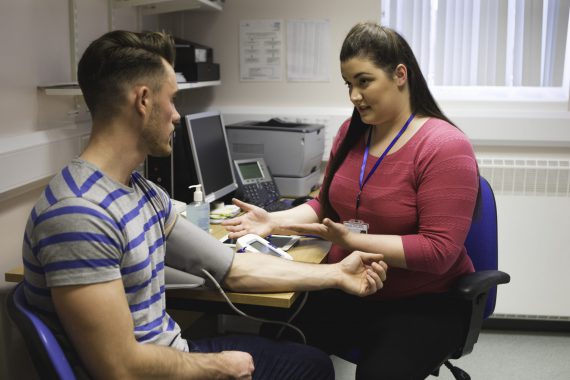Capping patient lists would make GPs and patients safer


Motion 16 at this Friday’s English LMCs conference is an Agenda Committee construct, encompassing key proposals put forward by myself and colleagues at Shropshire LMC.
It mentions first that GP work should be measured in hours rather than sessions, since a session in general practice can be anything from a two- to three-hour surgery to a six-hour stint that may extend to eight hours if prescriptions, pathology results, hospital reports, home visits and referral letters are taken into account. Secondly, it looks at reducing the core contract hours to a 10-hour day, already longer than most working days.
Thirdly it suggests limiting the list size, for a whole-time GP, to 1,500 patients. This is not a new idea. The RCGP suggested this number as a safe list size some years ago and in Australia the average number of patients per GP is fewer than 1,000.
It may be helpful to look at comparator health systems and if we look at other European countries the average list size is around 1,000 patients. Norwegian GPs have around 1,100 patients and in Italy GPs who reach 1,000 patients have to employ another GP or suggest that new patients join a neighbour practice. A survey that UEMO, the European Union of GPs, conducted recently showed that delegates from European nations thought that 1,250 was a safe list size for both patients and their doctors.
We need to make sure that this does not attract financial penalties because this move is a safety measure
General practice is no longer a safe place – recent surveys by the BMA found that the majority of GPs feel they can no longer provide safe care for their patients. Younger doctors are reducing their time commitments so that they work less hours, older GPs are planning an early retirement and those in the middle are leaving, many to work as a GP in Australia, Canada or New Zealand. More GPs are admitting to burnout and even trainees are reporting that a third of this cohort suffer from stress.
We try to push resilience, while aware that we would not suggest that our patients, in an abusive situation, should practise resilience. Reducing the list size would make general practice safer. We need to make sure that this does not attract financial penalties because this move is a safety measure. Shropshire LMC is considering adding a rider to the motion to state that this must come with a guarantee no loss of earnings or with appropriate funding.
We know that how we are operating at present is not working. Not only is it dangerous for doctors, exposing them to increased risk in a climate of medical litigation, but our health outcomes do not compare well with other European countries. In the latest Commonwealth Fund report, the UK rates highly on process scores, with good marks in cost-effectiveness, easy access to medical care and lack of financial penalties. However, the UK came 10th out of 11 countries in health outcomes, with only the USA scoring lower. UK life expectancy is falling while child mortality is rising.
There is no point in having increased hours of access, with GP days averaging 11-14 hour days, if we are not improving the health of our population. Reducing list size would ease the pressure on general practice and make it a more pleasant place to work, and might encourage those doctors who have reduced their hours to come back to general practice. In Europe they are used to looking at other health systems to learn about what works best. We rarely look at other health economies but we could learn a lot from European general practice. Modelling our list size on the European average would be a first step.
Dr Mary McCarthy is a GP in Shrewsbury and chair of Shropshire LMC
Pulse October survey
Take our July 2025 survey to potentially win £1.000 worth of tokens











